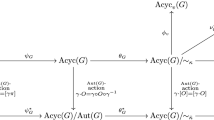Abstract
A finite dynamical system (FDS) is a system of multivariate functions over a finite alphabet, that is typically used to model a network of interacting entities. The main feature of a finite dynamical system is its interaction graph, which indicates which local functions depend on which variables; the interaction graph is a qualitative representation of the interactions amongst entities on the network. As such, a major problem is to determine the effect of the interaction graph on the dynamics of the FDS. In this paper, we are interested in three main properties of an FDS: the number of images (the so-called rank), the number of periodic points (the so-called periodic rank) and the number of fixed points. In particular, we investigate the minimum, average, and maximum number of images (or periodic points, or fixed points) of FDSs with a prescribed interaction graph and a given alphabet size; thus yielding nine quantities to study. The paper is split into two parts. The first part considers the minimum rank, for which we derive the first meaningful results known so far. In particular, we show that the minimum rank decreases with the alphabet size, thus yielding the definition of an absolute minimum rank. We obtain lower and upper bounds on this absolute minimum rank, and we give classification results for graphs with very low (or highest) rank. The second part is a comprehensive survey of the results obtained on the nine quantities described above. We not only give a review of known results, but we also give a list of relevant open questions.




Similar content being viewed by others
References
Aracena J (2008) Maximum number of fixed points in regulatory Boolean networks. Bull Math Biol 70:1398–1409
Aracena J, Salinas L. Private communication
Aracena J, Demongeot J, Goles E (2004) Fixed points and maximal independent sets in AND–OR networks. Discrete Appl Math 138:277–288
Aracena J, Richard A, Salinas L (2014) Maximum number of fixed points in AND–OR–NOT networks. J Comput Syst Sci 80(7):1175–1190
Aracena J, Richard A, Salinas L (2017) Number of fixed points and disjoint cycles in monotone Boolean networks. SIAM J Discrete Math 31:1702–1725
Atkins R, Rombach P, Skerman F (2017) Guessing Numbers of Odd Cycles. Electron J Comb 24(1):1–20
Bang-Jensen J, Gutin G (2009) Digraphs: theory, algorithms and applications. Springer, Berlin
Bridoux F, Castillo-Ramirez A, Gadouleau M (2015) Complete simulation of automata networks. arXiv.1504.00169
Christofides D, Markström K (2011) The guessing number of undirected graphs. Electron J Comb 18(1):1–19
Comet J-P, Richard A, Noual M, Aracena J, Calzone L, Demongeot J, Kaufman M, Naldi A, Snoussi EH, Thieffry D (2013) On circuit functionality in Boolean networks. Bull Math Biol 75(6):906–919
Demongeot J, Noual M, Sené S (2012) Combinatorics of Boolean automata circuits dynamics. Discrete Appl Math 160:398–415
Didier G, Remy E (2012) Relations between gene regulatory networks and cell dynamics in Boolean models. Discrete Appl Math 160:2147–2157
Flajolet P, Sedgewick R (2009) Analytic combinatorics. Cambridge University Press, Cambridge
Flajolet P, Odlyzko AM (1989) Random mapping statistics. Research Report, INRIA RR-1114, pp 1–26
Gadouleau M (2017) On the stability and instability of finite dynamical systems with prescribed interaction graphs. arXiv:1709.02171
Gadouleau M (2018a) On the rank and periodic rank of finite dynamical systems. Electron J Comb 25(3):3–48
Gadouleau M (2018b) On the possible values of the entropy of undirected graphs. J Graph Theory 88:302–311
Gadouleau M, Richard A (2016) Simple dynamics on graphs. Theor Comput Sci 628:62–77
Gadouleau M, Riis S (2011) Graph-theoretical constructions for graph entropy and network coding based communications. IEEE Trans Inf Theory 57(10):6703–6717
Gadouleau M, Richard A, Riis S (2015) Fixed points of Boolean networks, guessing graphs, and coding theory. SIAM J Discrete Math 29(4):2312–2335
Gadouleau M, Richard A, Fanchon E (2016) Reduction and fixed points of Boolean networks and linear network coding solvability. IEEE Trans Inf Theory 62(5):2504–2519
Goles E (1985) Dynamics of positive automata networks. Theor Comput Sci 41:19–32
Goles E, Noual M (2012) Disjunctive networks and update schedules. Adv Appl Math 48(5):646–662
Goles E, Tchuente M (1983) Iterative behaviour of generalized majority functions. Math Soc Sci 4:197–204
Noual M, Sené S (2017) Synchronism versus asynchronism in monotonic Boolean automata networks. Nat Comput 17:393–402
Paulevé L, Richard A (2010) Topological fixed points in Boolean networks. C R Acad Sci Ser I Math 348:825–828
Riis S (2006) Utilising public information in network coding. In: Ahlswede R, Bäumer L, Cai N, Aydinian H, Blinovsky V, Deppe C, Mashurian H (eds) General theory of information transfer and combinatorics, vol 4123. Lecture notes in computer science. Springer, Berlin, pp 866–897
Riis S (2007a) Graph entropy, network coding and guessing games. arXiv:0711.4175
Riis S (2007b) Information flows, graphs and their guessing numbers. Electron J Comb 14:1–17
Robert F (1980) Iterations sur des ensembles finis et automates cellulaires contractants. Linear Algebra Appl 29:393–412
Scheinerman ER, Ullman DH (1997) Fractional graph theory. Wiley, Hoboken
Shenvi S, Dey BK (2010) A simple necessary and sufficient condition for the double unicast problem. In: Proceedings of ICC 2010
Author information
Authors and Affiliations
Corresponding author
Additional information
Publisher's Note
Springer Nature remains neutral with regard to jurisdictional claims in published maps and institutional affiliations.
Rights and permissions
About this article
Cite this article
Gadouleau, M. On the influence of the interaction graph on a finite dynamical system. Nat Comput 19, 15–28 (2020). https://doi.org/10.1007/s11047-019-09732-y
Published:
Issue Date:
DOI: https://doi.org/10.1007/s11047-019-09732-y




